Last Updated on 6 years by Naveen Kumar
Today’s blog is all about how to choose the right pair of sports shoe for both men and women, more like a buying guide and what factors to keep in mind when shopping for one!
What is a Sports Shoe?
Typically, a sports shoe is nothing but shoes that are primarily designed for sports or other forms of physical exercise. However, today, with a lot of fashion and sports brands coming out with stylish sport shoes or sneakers, apart from the typical performance shoes, they are often used as everyday wear.
Different kinds of Sports Shoes
Generally, we assume (unless of course you are a sports enthusiast or player) that a pair of sports shoe can cater to all our needs, from walking, running, trekking, hitting the gym to as an everyday wear! But what we need to understand is that though several of these types might look similar, there are different kinds of sports shoes designed uniquely for various sports and purposes. Walking shoes are stiffer; running shoes are more flexible, with extra cushioning to handle greater impact.
The most common types of sports shoes are:
- Hiking Shoes
- Running Shoes
- Training/Gym Shoes or Cross trainers
- Soccer Shoes
- Minimalist Shoes
- Basketball Shoes
- Tennis Shoes
- Golf Shoes
- Casual Sports Shoes
Why should you choose the right pair of Sports Shoe?
A training or sports shoes is essentially a key fitness or sports gear. Choose the wrong athletic shoes and you could end up lying on the couch nursing shin splints or aching heels instead of enjoying a brisk walk or playing your favorite sport.
While most specialty sport shoe stores have knowledgeable staff to guide you, you’ll be a few steps ahead of the game armed with some basic knowledge about your feet and their specific needs.
Keep in mind that you shouldn’t make shoes multitask. Walking shoes are for walking only, soccer shoes are designed for playing soccer, cross trainers are for gym and training purposes!
How to choose the right pair of Sports Shoe- the Ultimate Sport Shoe buying Guide for Men & Women
So here we are giving you a comprehensive guide on how to choose the right sports shoes for gym or running for men and women.

Factors to keep in mind when buying Sports Shoes
1. Need
What are you going to use the shoe for? Running, trekking, training or for engaging in any particular sport or just as a casual everyday shoe? This is because different kinds of sports shoes are designed for different purposes and particular sports. Once you are clear on what you need the sports shoe for, half the job is done!
For example, if you decide you need to buy shoes for gym, then you need to figure out if you are someone who focuses more on cardio exercises or weight-lifting and make your choice accordingly.
- Weight lifting- When lifting weights, it’s important that you have a firm, flat grip on the ground to ensures proper form and that your stance offers you a safe grip. And avoid wearing thick-soled running shoes when lifting weights.
- Gym or Aerobics class or Dance studio based workouts- A cardio session means you need some supportive shoes for constant jumping and side-to-side shuffling and hence invest in a pair of shoes that provide ample cushioning and support as well as grip.
- Treadmill- If you are looking to spend more time on the treadmill every time you hit the gym, you should invest in running shoes. Choose shoes that give you the support you need based on how you run; like over-pronators, who need shoes that keep their feet from rolling inward while they run.
Tip: Don’t let shoes multitask; use walking shoes for walking, soccer shoes for playing soccer and trainers for gym or training.
2. Gait
When choosing running shoes, you should always take into consideration your running gait. Your gait describes how you run and dictates how your foot hits the ground. If are someone who runs on the inside of your feet, you are said to be a pronator; if you run on the outside of your feet, you are a supinator. And if your footfall is neither of the above then you are said to be neutral.Tip: To figure out if you pronate or supinate, just look at the wear patterns of an old pair of running shoes or look at your footprints next time you get out the shower.
3. Surface
That is more less dependent on the need factor. Once you know what you need the sports shoe for, you will know the surface on which you are going to use the shoes. For example, gym would mean carpet or matted floors, running means track, trekking mean rocky or hard terrain etc.
The reason why knowing the surface is key is because it can significantly influence the kind of shoe will be ideal for your foot.
For instance, if you are running on a track or court specially designed to be flat and offer grip, you won’t need extra traction on your shoe.
4. Know your foot
Though we all have ten toes, feet comes in a variety of shapes. Though you might be a size 7 or 9, your feet might be different from another 7 or 9 in terms of the curve of the sole, the narrowness or broadness or flatness of the feet etc. And knowing your foot’s particular quirks is key to selecting the right pair of shoes. Most major brands now offer a model to suit every foot type.
5. Fit
Getting the right fit will prevent blisters, foot pain and general discomfort. Even if you choose to buy your shoes online, going to a store and trying them on beforehand is highly recommended.
Aim for shoes that are snug. If you feel pinching or uncomfortable rubbing, that pair of shoes is likely not your best fit. While using the shoes, the feet will swell in size (over the course of training or running). Also, the uncomfortable features will likely become worse with each mile or step, causing you discomfort.
Tip: When shopping for gym or running shoes, it is best to try them on after a run or after a typical workout. This way, your feet will be at their largest and the fit will be similar to the way they will fit at the gym or while running. Similarly, take your own socks with you and put them on while trying the shoes.
6. Heel & Instep Fit
The heel should fit snug, but not tight; Laced up (but not tied), you should be able to slide your feet out. There should be a firm grip of the shoe to your heel. Similarly, a shoe’s upper should feel snug and secure around your instep. Feet tends to swell and lengthen over the course of running or training, hence make sure there’s a thumb’s width of space between your longest toe (which isn’t always the big toe) and the end of a shoe.

7. Foot or Arch Type
Knowing your foot type or arch type is yet another key factor to be considered when choosing the tight sports shoes. Using the “wet test” can help you determine if you have normal, flat, or high-arched feet.
- Low arched feet or flat feet are those that do not have much of a gap between the floor and the arch of the foot when standing. This foot type is very flexible and needs a shoe that can control its motion.
- High arched feet are those that have a large gap between the floor and the arch of the foot. This foot type tends to be rigid and needs a shoe that can absorb the shock of running. Look for a shoe that is flexible and has a thick and cushioned mid-sole.
- Neutral feet are those that have an arch height between high and low. This foot type can accommodate most shoe types.
8. Cushioning
If you think more cushioning is always better, then its a wrong assumption. The different amounts of cushioning are best for different reasons. Choose the level of cushioning depending on the purpose for which you are going to use it for. Heavier and high mileage runners need a cushioning shoe designed to absorb impact.
9. Light Weight
Lightweight construction of the sport shoe is another feature to look for when choosing one. For example, opt for a lightweight shoe if you’re a walker. You’ll need the extra shock absorption in the heel and ball of your foot to cut down on pain and tenderness.
10. Waterproof & Breathable uppers/Vents
With the unpredictable weather conditions today, it is best to choose a waterproof sports shoe, especially if you are looking at trekking/hiking, running shoes. Most waterproof shoes have a membrane bonded into interior lining of the shoes, which blocks moisture from entering while allowing feet to breathe. Similarly, you can also opt for shoes that have breathable uppers or vents. This is especially when used for training in gyms. Shoes with waterproof membranes keep feet dry in wet environments with a slight trade-off in breathability.
11. Laces
Laces should be snug but not tight. Barefoot shoes are an exception: Heel and toes should “fit like a glove” without any extra space in the toes.
Remember to replace running shoes when they begin to show visible wear or after 500 miles of use, whichever occurs first. This typically is after three to four months for regular runners.
Common Mistakes to Avoid when buying Sports shoes
- Never buy sports shoes just for the looks. You can do that when choosing casual sportswear for everyday wear.
- Buying shoes that aren’t the right fit; opting tight fits thinking it will expand over time with usage.
- Assuming the size and buying a pair of sports shoes without actually measuring the size and buying.
- Don’t just pick the most expensive option, assuming they will be better.
Where to Buy Sports Shoe Online for Men & Women
Here are some top brands of Sports Shoe for men & women:
NIKE
Buy NIKE here
Adidas
Buy Adidas here
Reebok
Buy Reebok here
Puma
Buy Puma here
FILA
Buy FILA here
Under Armour
Buy Under Armour here
ASICS
Buy ASICS here
So do you think this guide has been useful for you? Do let us know through your comments.


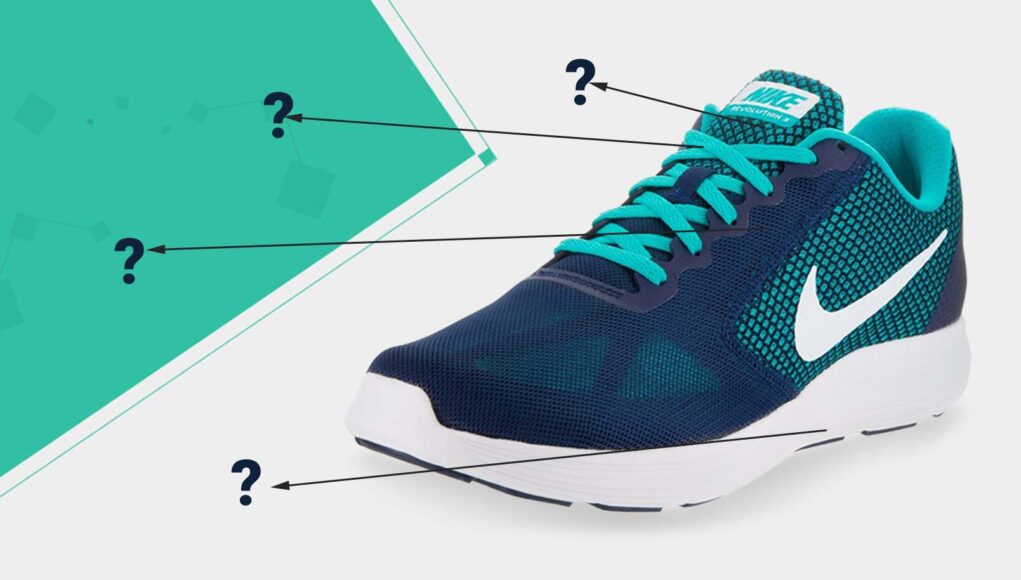








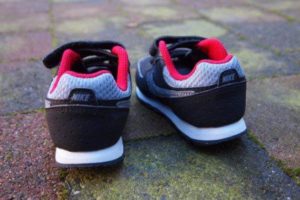






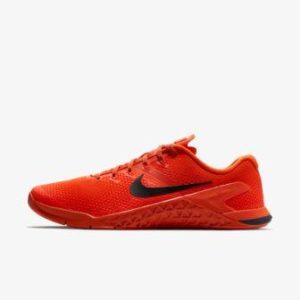




















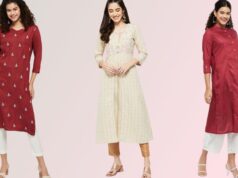

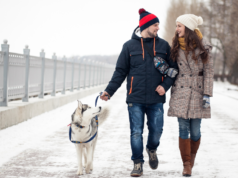



Great work on your blog post! It was evident that you put effort into structuring the content in a logical manner. I enjoyed the clarity of your explanations and the practical applications you discussed. To learn more about this subject, click here.